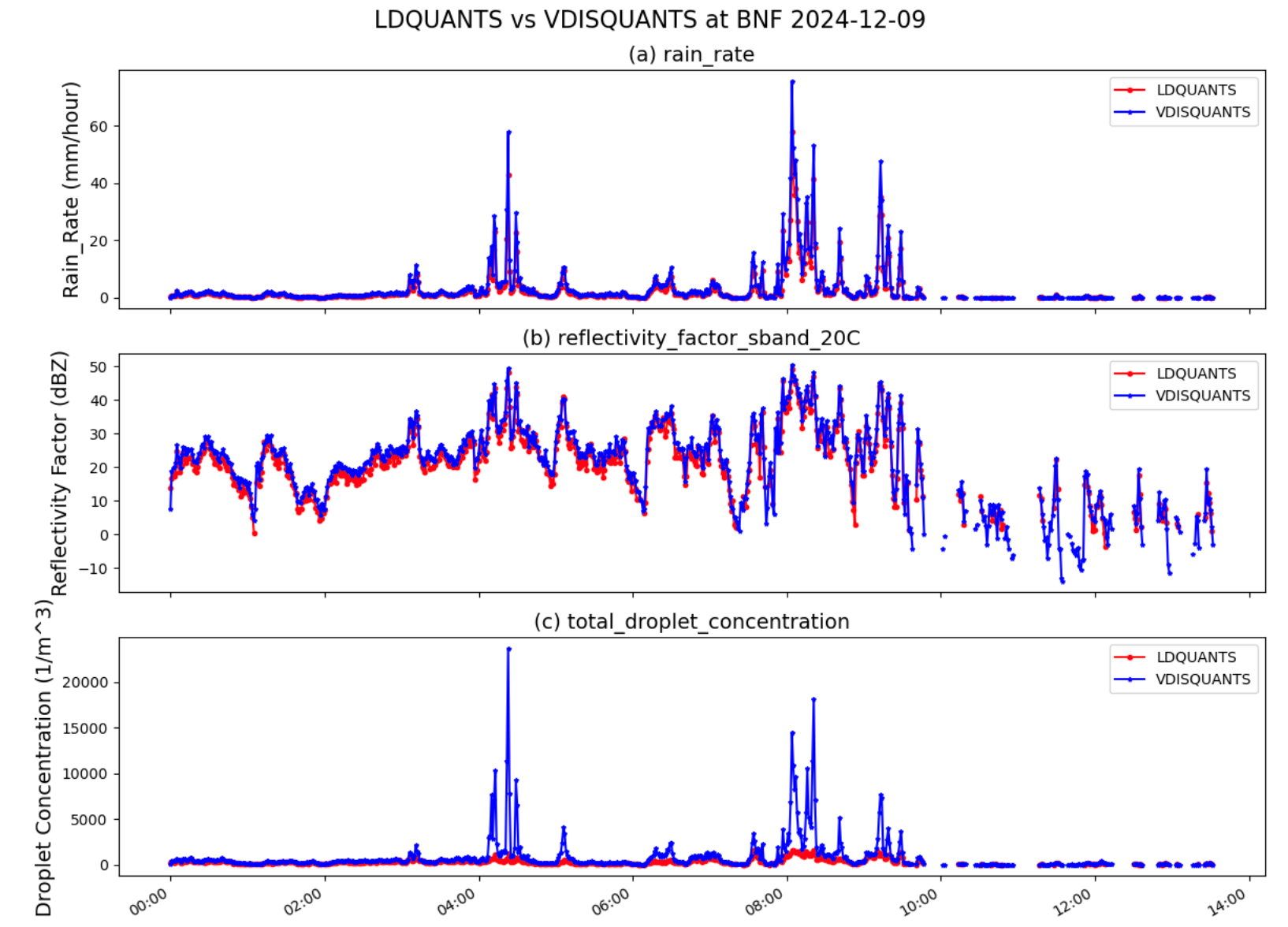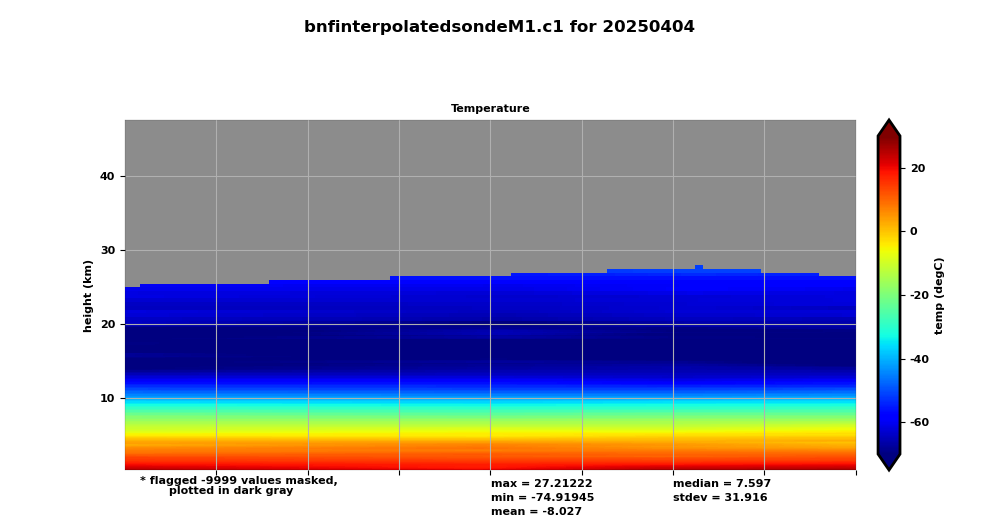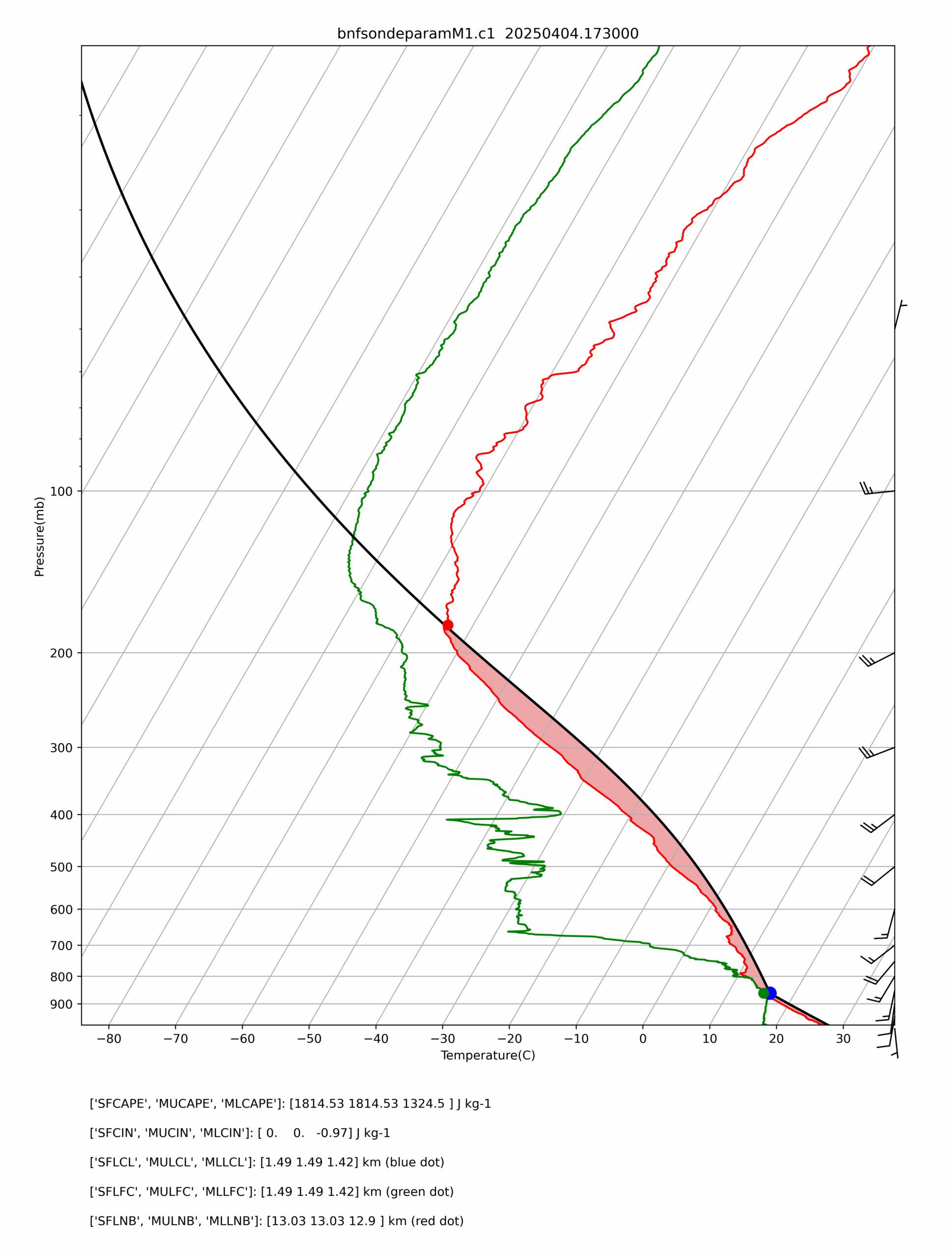New Data Products Available for Ongoing ARM Deployments
Published: 21 May 2025

The Atmospheric Radiation Measurement (ARM) User Facility has released new disdrometer and sonde value-added products (VAPs) from three ongoing mobile deployments:
- the Bankhead National Forest (BNF) atmospheric observatory in northern Alabama
- the Coast-Urban-Rural Atmospheric Gradient Experiment (CoURAGE) in the Baltimore, Maryland, area
- the Cloud And Precipitation Experiment at kennaook (CAPE-k) in northwestern Tasmania.
Three VAPs—Laser Disdrometer Quantities (LDQUANTS), Video Disdrometer Quantities (VDISQUANTS), and Interpolated Sonde (INTERPSONDE)—are now all available for the BNF, CoURAGE, and CAPE-k. In addition, the Convective Parameters Derived from Radiosonde Data (SONDEPARAM) VAP is newly available for the BNF.
LDQUANTS and VDISQUANTS provide quality-controlled measurements of drop size distributions (DSDs), rain rates, and polarimetric radar quantities based on laser disdrometers and video disdrometers, respectively.

DSD measurements from disdrometers can be used to estimate key precipitation properties, including the rainfall rate, number concentration of drops, and mean raindrop size information. LDQUANTS and VDISQUANTS use standard quality control methods adapted from the literature to filter spurious drops and calculate important microphysical quantities of parameterized DSDs (e.g., gamma/exponential DSD assumptions and fitting).
In support of radar-based research interests and monitoring, LDQUANTS and VDISQUANTS also estimate radar-equivalent dual-polarization quantities (e.g., Reflectivity Factor Z, Differential Reflectivity ZDR) using the T-matrix scattering technique for several wavelength, temperature, and drop shape assumptions. Both VAPs are available at one-minute resolution.
INTERPSONDE converts data from balloon-borne sounding systems into continuous daily files on a fixed time-height grid. It is available at one-minute resolution, and the vertical grid extends from the surface to 40 kilometers (332 levels) to capture the full height of original soundings.

Between soundings, which are six to 12 hours apart, the VAP linearly interpolates atmospheric state variables between two values in time and space. In addition, the VAP provides scaled relative humidity values based on ARM microwave radiometer precipitable water observations.
SONDEPARAM applies stable and consistent algorithms from Wang et al. (2020) for calculating useful radiosonde convective cloud parameters, including convective available potential energy, convective inhibition, and lifting condensation level/level of neutral buoyancy/level of free convection. Because the calculation of these parameters is highly sensitive to the initial parcel characteristics, several parcel options are included (i.e., surface-based, most unstable, mixed layer).
LDQUANTS, VDISQUANTS, and INTERPSONDE are all available for the BNF, CoURAGE, and CAPE-k in daily netCDF files.
SONDEPARAM for the BNF is also available in daily netCDF files. CoURAGE SONDEPARAM data will come available later this year. However, the VAP will not be produced for CAPE-k because the environment there is rather stable and rarely supports the development of convection.
Scientists can access the data and additional information about the VAPs, including their technical reports, on the web pages for LDQUANTS, VDISQUANTS, INTERPSONDE, and SONDEPARAM. (To download the data, first create an ARM account.)
To ask questions, provide feedback, or report data issues, please contact ARM translator Dié Wang or VAP developer Aifang Zhou.
To cite the data, please use the following DOIs:
- LDQUANTS – doi:10.5439/1432694
- VDISQUANTS – doi:10.5439/1592683
- INTERPSONDE – doi:10.5439/1095316
- SONDEPARAM – doi:10.5439/1827079.
Keep up with the Atmospheric Observer
Updates on ARM news, events, and opportunities delivered to your inbox
ARM User Profile
ARM welcomes users from all institutions and nations. A free ARM user account is needed to access ARM data.


















